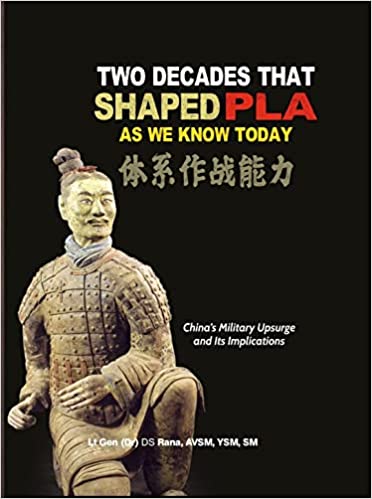An avalanche of news about political resignation of Dalai Lama XIV and unprecedented election of a new head in exile of Tibetan people that swept the world in July-August 2011 turned out to be media preview (coverage) to a changing political activity of Tibetan ethnic community in the global ideological space. Isn’t it good time to be challenged by the questions about the implications of these changes in the near future: What will the forthcoming spring of 2012 bring? Will the Chinese Administration manage to have the 53-rd anniversary of Tibet liberation from serfdom marked without riots and bloodshed? How will the advocates of peaceful Tibet liberation, no longer loyal to the “Middle way” doctrine, behave in the days of Tibetan people’s grievance? What will be the reaction of Tibetan refugees enclaves scattered throughout the world as well as Russian and Western Tibetan Buddhism apologists, various ethnic, religious and non-governmental organizations, human rights watchdogs struggling for genuine autonomy of Tibet Autonomous Region (TAR) within China’s borders? All these questions are quite relevant, provided there is an understanding that recent - 6 months-long – major political restructuring of Tibetan Diaspora implied total ideological perestroika of Tibetan problem, its substance and possible scenarios of its solution.
From the issue to the problem
The Tibetan problem in its contemporary geopolitical meaning is shaped not only by the interests of internal policy of the Chinese Administration and political claims of the Tibetan community deprived of its own territory. Among the most active participants, which formulate and escalate the political conflict, are the governments of the countries that have given refuge to enclaves of Tibetan exiles and where Buddhist communities as well as various religious, ethnic and human rights non-governmental civil organizations standing for political self-determination of Tibetans have been historically present.
Within a framework of transnational interaction of these stakeholders the core of Tibetan problem can be different depending upon the changes taking place in global political and economic situation, balance of power in the region and prospects of Central Asian energy and mineral resources exploitation, etc. However, paradoxically, its essentials are formulated similarly for all the participants – Tibetan Autonomous Region (TAR) is defined as a hotbed of ethnic and religious violence fraught with terrorist attacks and erosion of ethnic minorities’ traditional culture. Geopolitical outcome of this definition can be determined or predicted only provided the interests and activity vectors of key stakeholders and creators of Tibetan problem contemporary format are taken into account.
Ethnic and religious minorities’ rights or cultural genocide?
Key stakeholders responsible for proposing different formats of Tibetan problem can be grouped according to the way they interpret it – either as an issue of PRC internal policy towards national, ethnic and religious minorities or as an issue of the global democratic discourse about human and national minorities’ rights for political and cultural self-determination.
China’s political leadership attaches primary importance to Tibetan issue in their inter-state contacts with those countries of the West and the East which host Tibetan refugees’ enclaves. Perceiving TAR as an alienable part of Chinese territory, Beijing boils the Tibetan problem down predominantly to the issue of subversive and separatist activities of “political hooligan” Dalai Lama XIV and his clique.
Such an implacable position of the Chinese administration puts the governments of the countries developing cooperation with the PRC in pretty awkward situation. In fact, they are expected to take Tibetan problem as Chinese internal policy issue, thus disregarding historical facts and current state of affairs. For Russia, it brings about home policy problems in cultural and religious spheres, such as public protests of faithful Buddhists rightfully demanding from the Russian administration to authorize Dalai Lama’s visit to the country, and also regularly circulated by mass media Russian and Western human rights watchdogs’ charges of believers’ rights and freedoms infringement.
Referring to the realities of the past we have to say that the Tibetan problem has its roots in China’s geopolitical initiatives in Central Asia. Back in the 50-ies a purposeful repartition of previously independent Tibet took place: central Tibet, which became part of the People’s Republic of China, was transformed into Tibetan Autonomous Region, and its two outlying territories became part of China’s provinces Yunnan, Sichuan, Qinghai and Gansu. Uncompromising struggle of Chinese political leadership with “Tibetan serfdom system and vestiges of feudalism” in 1960-1970-s, repression of the Buddhist clergy in Tibet and brutal crackdown on ethnic opposition triggered off exodus of Tibetans to South Asian countries and migration of some refugees to the West.
Grappling with dramatic costs of “cultural revolution” at home, Beijing made huge efforts and allocated much money in an attempt to sort out the problem of Tibetan language and ethnic culture preservation and renewal. In the year of 2000 the Chinese administration launched the “Great Development of Western Regions” program which resulted in construction of Tibet Railway, new modern airport, creation of transportation infrastructure, housing construction of scale and entire modernization of socio-cultural sphere.
The implementation of these initiatives has its flip side: the program can successfully be carried out only by attracting the labor force of Han ethnic group, which inevitably leads to the escalation of inter-ethnic tensions. Forced economic and cultural modernization destroys traditional lifestyle of Tibetan people and is often understood as “cultural genocide” with a view to turning Tibet into religious and cultural reservation for tourists. It is what consolidates the positions of the two most concerned stakeholders – the Tibetan Diaspora and the governments of the Western and Eastern countries that gave asylum to Tibetan refugees – on the Tibetan issue.
In the late 1950-s – early 1960-s India, Nepal, Bhutan, Ladakh, Sikkim, Taiwan and Japan hosted most of Tibetan refugees. India granted asylum to Dalai Lama XIV and authorized the creation of the largest Tibetan enclave on its territory. It’s in India where such democratic institutions allowing Tibetan ethnic diaspora to rise to global prominence as Tibetan Government in exile, Tibetan Parliament in exile (currently the Assembly of People’s Deputies of Tibet) were set up.
In the countries of the ‘West” – Germany, Switzerland, France, Great Britain, Australia, New Zealand, Canada, Norway, Denmark, the Netherlands, Italy, USA – Tibetan enclaves got the status of the communities of refugees who fled their country because of religious and political persecution. Thanks to the efforts of religious missionaries nurtured by the Diaspora, Tibetan Buddhism won a great number of followers in Europe, America and Russia. New apologists of Tibetan Buddhism established numerous religious NGOs and NGOs supporting Tibet self-determination, as well as human rights organizations and groups.
The interpretation of Tibetan problem as genocide of Tibetan people, the custodian of the Buddhist culture, unique example of modern humanism, consistent combination of religion and politics served as the ideological basis for consolidation of Tibetan Diaspora, Western and Asian governments, various NGOs, followers of Tibetan Buddhism and champions of a free Tibet. Religious and educational mission of Dalai Lama XIV who was awarded in 1989 the Noble Peace Prize for non-violent struggle for a free Tibet became a symbolic embodiment of this consolidation (http://nervana.name/buddism/dalay-lama/index.html). He assumed the role of an ideologist, and creator of Tibetan Diaspora democratic reforms and consistently pursued the “Middle Way” doctrine the ultimate goal of which is to promote peaceful solution of Tibetan problem.
Political rhetoric and conflict reality
Bloody riots which took place in Chinese Tibetan Autonomous Region in March-April 2008, failed attempts of Free Tibet advocates to boycott the Olympic Games in China and the reaction of the world NGOs supporting Tibet, added a whole new dimension to the Tibetan problem. Formerly united strugglers against the genocide of Tibetan people came into a sharp conflict over practical solutions of the Tibetan problem. Ethnic and transnational NGOs supporting Tibet, with the leaders of the Tibet Youth Congress being most active among them, were outspoken in their criticism of the ‘Middle Way” concept, wrongful acts of the Chinese Administration and Dalai Lama’s conciliatory stance. Dalai Lama had to publicly break with all strugglers for an independent Tibet, label them as separatists and, actually, deprive political actions in TAR of his blessing. Global mass media kept on circulating the news about diminishing authority of Dalai Lama, criticisms of his conciliatory policy, suspicions of collusion with the Chinese administration as well as rumors of poor health of a senile hierarch who badly needs a young successor. The all-Tibetan referendum which was held in Indian Dharamsala in November 2008, and which brought together the delegates from the countries hosting Tibetan refugees, appeared to be an interim attempt to provide for some semblance of conciliation among the strugglers against the genocide of Tibetan people. However, the referendum failed to bring about the conciliation in question because the main point of the resolution was the acknowledgement of the necessity to stick to the ‘Middle way” concept, Dalai Lama’s political leadership and consolidation with all dissident groups and opponents of the Chinese regime.
Bearing in mind all the abovementioned facts, the following events of spring and summer of 2011, such as the refusal of Dalai Lama XIV from the status of political leader of Tibetan Diaspora, the election in July a new albeit non-religious head, total restructuring of Diaspora’s political governing bodies, the introduction of cardinal amendments in the text of the so-called Tibetan constitution (the Charter of Tibetans in exile) deserve our most undivided attention.
In political rhetoric of the reform advocates the refusal from the Buddhist theocratic regime and swearing in a 43 year-old Lobsang Sangay, a Tibetan emigrant, former leader of the Tibetan Youth Congress, awarded with the Master’s degree and PhD in law at the School of Law of Harvard University, is explained by the necessity of peaceful resolution of Tibetan problem in compliance with basic principles of western democracy. The legitimacy of this explanation is underpinned by public statements of Dalai Lama XIV in which the reform is viewed as a necessary measure to prevent the attempts of the Chinese Administration to behead Tibetan movement and find a new religious leader of Tibetan Buddhists, and also as the way to bring the accusations of Tibetan Diaspora of separatism to a halt.
The reform not only fails to reconcile the champions of struggle against the “genocide of Tibetan people”, but opens up new perspectives for aggravating contradictions and outbreaks of ethnic and religious clashes in the Tibetan Autonomous Region. The “Middle Way” concept rested on the principle of recurrence of the Buddhist theocracy with Dalai Lama XIV at the head of the Diaspora and opposed any radical forms of struggle. A new democratic form of governance does not necessarily follow from the Buddhist principles of humanism and non-violence, and a new Prime-Minister and his Cabinet, which consists mostly of the Tibetan Youth Congress’s activists, can hardly be seen as guarantors of a peaceful settlement of Tibetan problem. In terms of modern geopolitics, the Tibetan problem has turned into a self-sufficient discourse, the main purpose of which is not finding the solution to the problem but the quest for its extension and expansion. The interaction of the participants to this discourse is determined by their own interests and specific international agenda, which may include the Tibetan factor.
1. Becquelin N. Staged Development in Xinjiang // The China Quarterly. 2004. № 178. China’s Campaign to «Open Up the West»: National, Provincial and Local Perspectives. P. 358–378.




